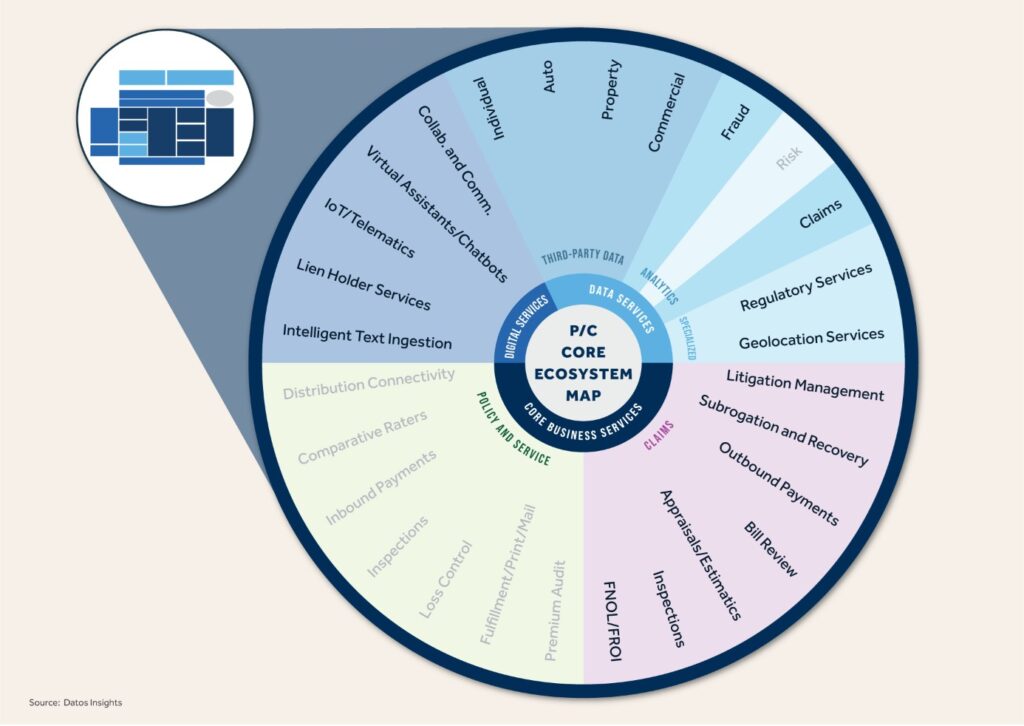In today’s rapidly evolving insurance landscape, modernizing claims management systems isn’t just advisable—it’s becoming imperative. According to recent Datos Insights research, property and casualty (P/C) insurers are increasingly implementing new claims systems driven by both operational necessities and strategic advantages.
I explored these and other trends in the P/C claims management space in our recent Market Navigator, Property/Casualty Claims Management Systems profiles 23 claims management solutions (19 of which are sold as part of a suite), provides an overview of key features and capabilities, and examines client bases, lines of business supported, and product roadmaps. Here are some of the critical insights insurers need to consider.

The Urgent Need for Claims Modernization
Legacy claims systems built on outdated technologies like COBOL are becoming unsustainable. The talent shortage for these specialized skills makes modernization a necessity rather than an option. Without action, insurers face increasing operational risks, including system failures, rising maintenance costs, and inability to meet evolving customer expectations.
Beyond these practical concerns, new claims systems deliver measurable financial benefits through improved outcomes and enhanced customer experiences. Several significant trends are redefining the P/C claims management landscape:
1. Cloud Transformation Accelerates
The industry is witnessing a decisive shift toward cloud-based platforms. Many providers now exclusively offer cloud-based claims solutions, enabling insurers to migrate from legacy on-premises systems toward more agile architectures.
However, cloud maturity varies significantly among vendors—some have fully embraced cloud-native design principles while others remain in transitional states. Insurers must carefully evaluate providers’ cloud strategies to ensure alignment with their digital transformation goals.
2. AI Integration Becomes Standard
AI integration represents a significant advancement in claims processing. Early implementations focus on copilot functionality—enabling natural language interaction with systems.
The most promising applications include natural language intake processing, automated claim file note generation, loss documentation analysis, and intelligent correspondence generation. Insurers that fail to incorporate these capabilities risk compromising their customer experience.
3. Agentic AI Emerges as Game-Changer
Unlike traditional AI implementations, agentic AI can autonomously initiate actions, manage complex workflows, and adapt based on outcomes. These systems proactively monitor intake queues, categorize intent, initiate workflows, and coordinate between different systems.
Early adopters of agentic AI will gain significant advantages in processing speed, accuracy, and cost efficiency.
Key Functionality for Claims Management Systems
Minimum requirements that insurers expect from a claims management system include:
- FNOL/FROI claim intake
- Automated coverage verification
- Rule-based claim assignment
- Comprehensive work management (automated and manual tasks and diaries)
- Configuration capabilities for UI, workflow, and business rules
Competitive differentiators include API libraries, self-service configuration capabilities, and a pre-integrated partner ecosystem.
Forward-thinking solution providers have begun implementing next-generation features such as:
- Cloud/SaaS evergreen updates
- Full integration with third parties
- Fully integrated AI models
- Low-code/no-code configuration tools
Strategic Implications for Insurers
Modern claims systems are transforming insurance cost centers to strategic value centers. By embracing these technological advancements, insurers can significantly enhance operational efficiency, improve customer satisfaction, and gain competitive advantages in an increasingly dynamic marketplace.
To learn more about these trends and evaluate the leading vendors in the claims management space, access our full report, Property/Casualty Claims Management Systems. Our analysis can help identify the operational risks with your claims technology strategy, as well as identify the solutions best aligned with your organization’s specific needs.

